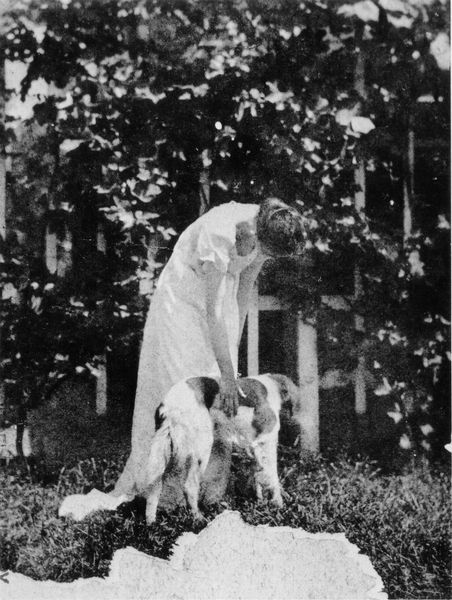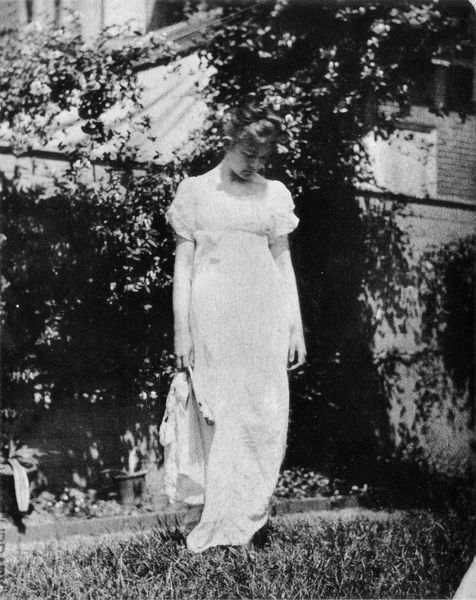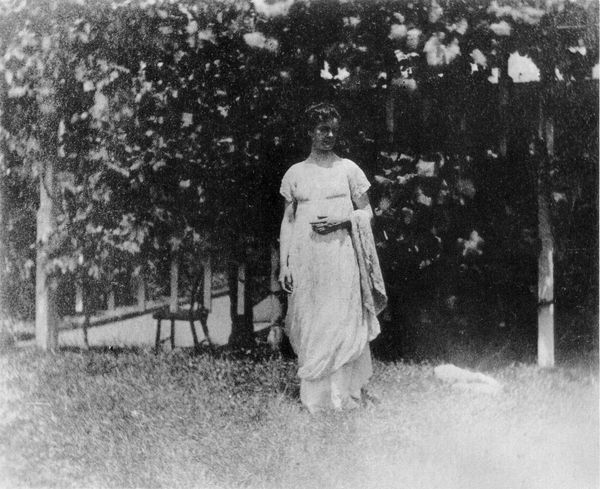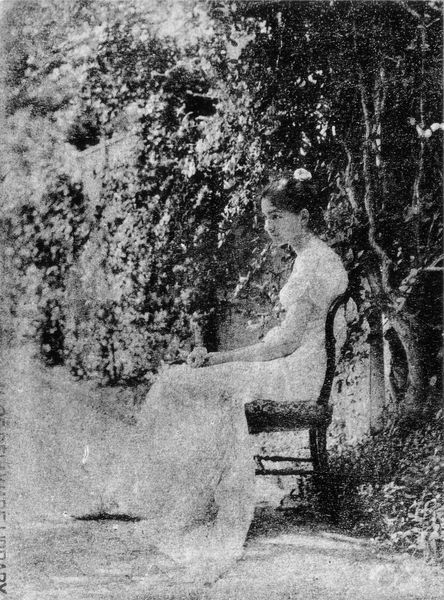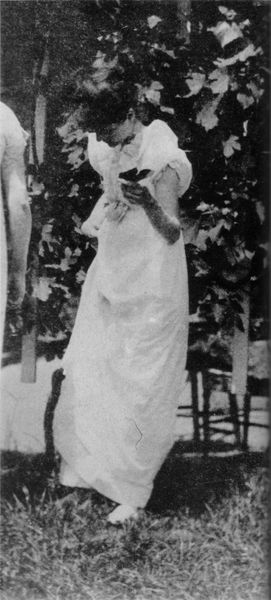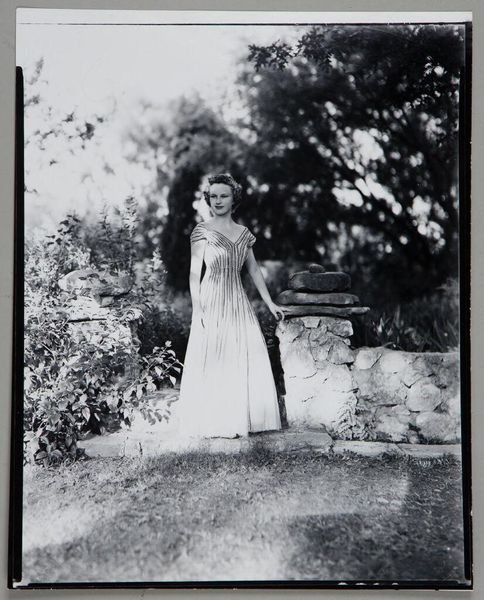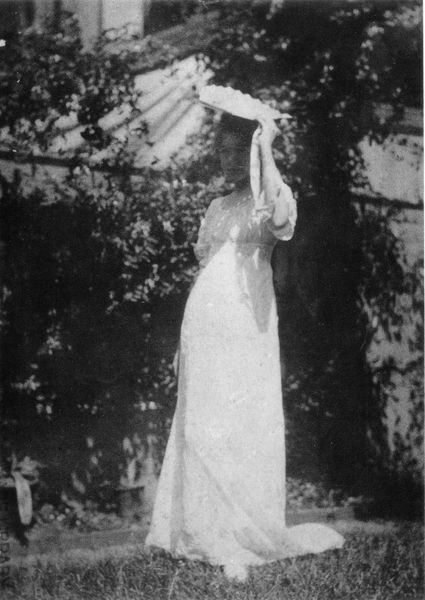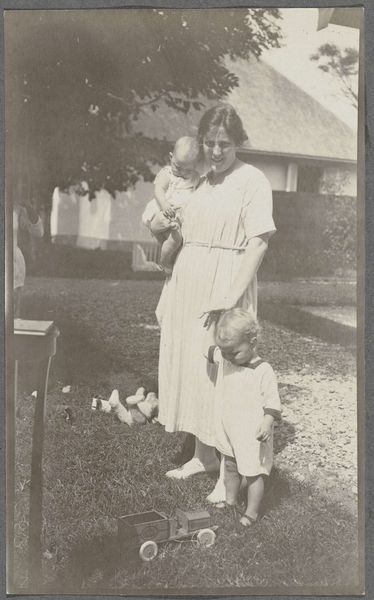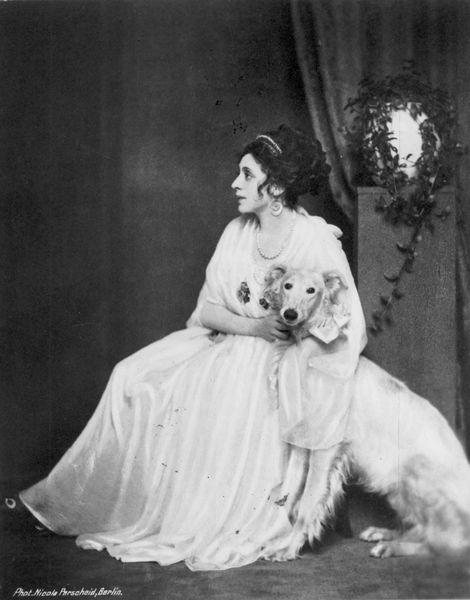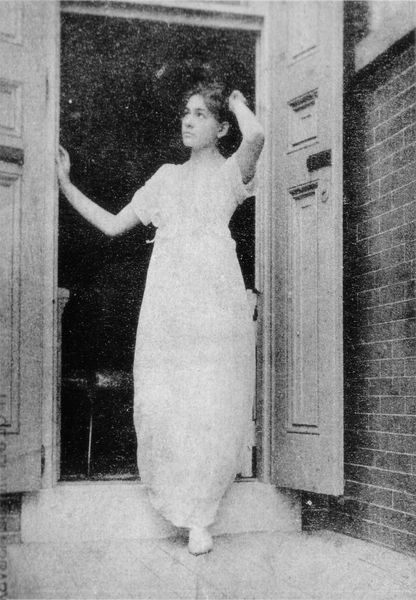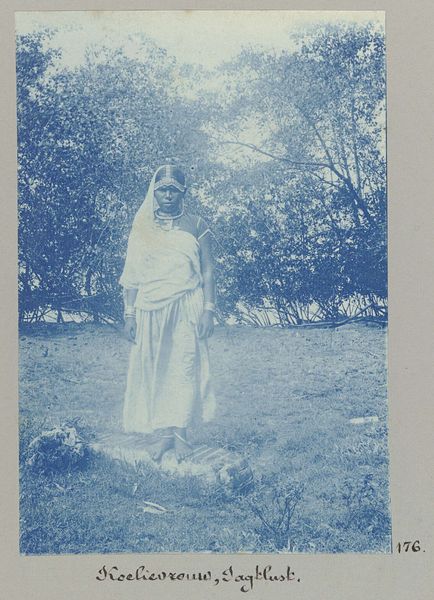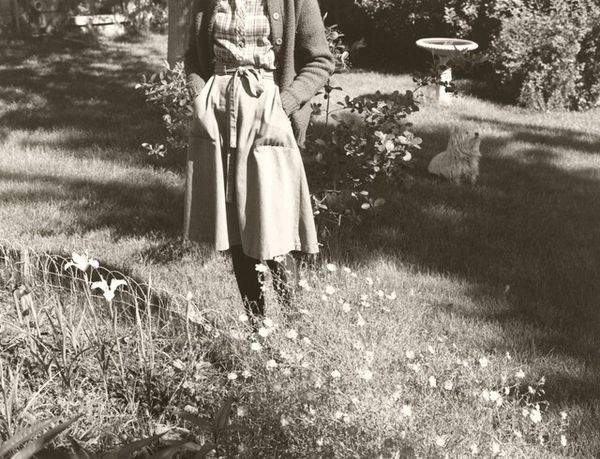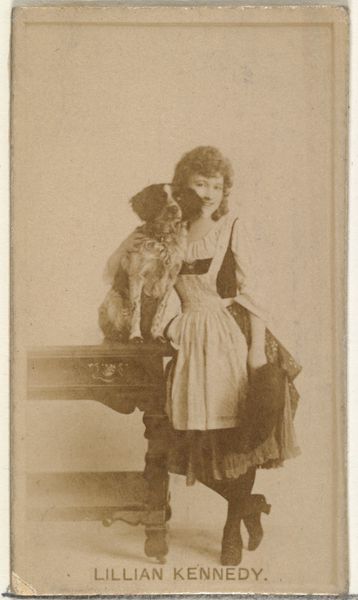
photography, gelatin-silver-print
#
portrait
#
still-life-photography
#
landscape
#
photography
#
gelatin-silver-print
Copyright: Public domain
Curator: Here we have a photograph by Thomas Eakins, simply titled “Photograph,” created around 1910, and printed on gelatin silver. The photo shows a woman in a white dress with a dog at her feet in a yard. What is your initial reaction to the piece? Editor: A sort of wistful solitude. The soft focus and stark black and white lend it an ethereal quality, as if we are observing a fleeting memory. She seems lost in her own thoughts, and the dog a faithful companion in her pensive isolation. Curator: I see your point. Dogs in art often serve as symbols of fidelity and companionship. The choice of clothing and posture evokes a feeling of reverie, which contributes to that overall symbolism, especially thinking about how those elements were read at the turn of the century. Editor: And the photograph, though simple in composition, speaks to complex social narratives of women’s roles at the time. Confined to domestic spheres, perhaps? I read an undertone of potential constraint even in the apparent tranquility. Curator: Certainly, one way of considering Eakins’ images lies in observing recurring elements over his career and making connections: the dress’s classical lines and draping suggest a reference to Greek or Roman statuary, further distancing the work from modern social realities and bringing in echoes from history. That choice of symbolism certainly speaks volumes. Editor: You bring up an important aspect: is it fair, though, to claim some ahistorical or purely symbolic gesture without examining the actual context for women’s dress at the time? Was the white dress really classical, or simply of its time and place? To decode effectively, don’t we need more awareness of photographic codes and practices ca. 1910? Curator: The photographic codes were undoubtedly shifting then, influenced by impressionism and the Arts and Crafts movement. Yet, I still observe a persistent theme in how similar clothing gets employed across time: referencing antiquity. Still, I see your larger point and appreciate its nuance. Editor: This interplay you’ve pointed out is precisely why approaching historical images from interdisciplinary angles remains essential: to ensure those undercurrents of meaning we locate resonate contextually and challenge us even now. Curator: Indeed. What starts as a photograph of a woman with a dog can turn into an investigation into our preconceptions and symbolic understandings over time.
Comments
No comments
Be the first to comment and join the conversation on the ultimate creative platform.
